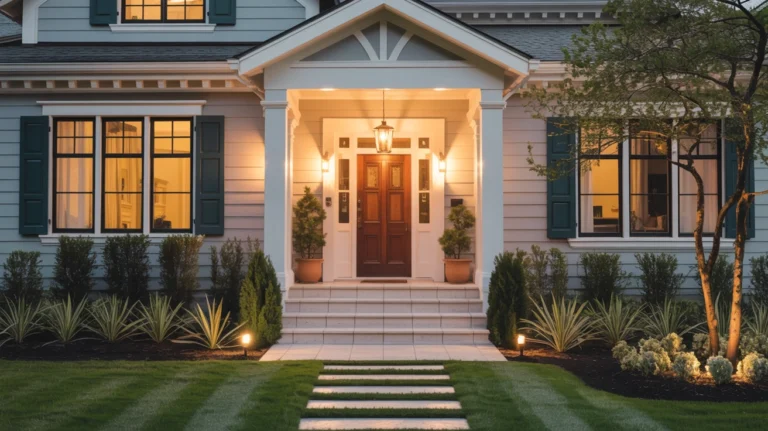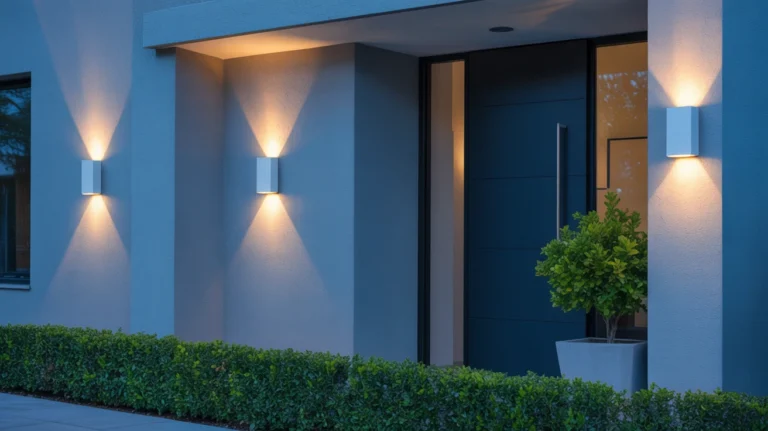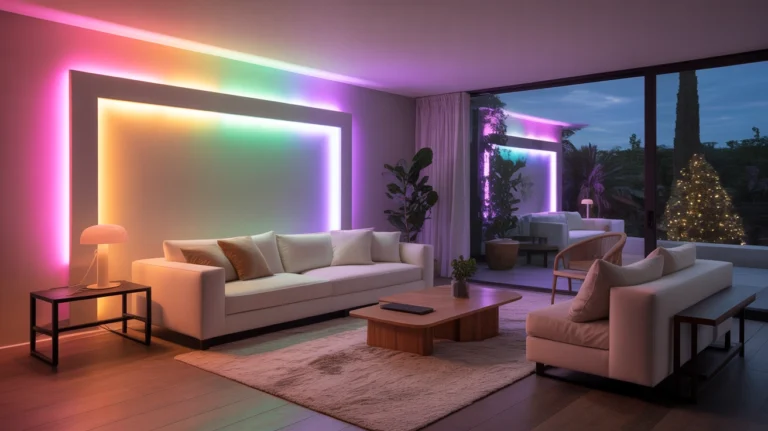Comparing Energy Efficiency of LED vs Traditional Lights
LED (Light Emitting Diode) and traditional lights (incandescent, halogen, and CFL) differ significantly in energy efficiency, impacting electricity costs, environmental footprint, and performance for exterior house lighting like porches, pathways, and driveways. In 2025, LEDs dominate due to their low energy use and longevity, but understanding their advantages over traditional lights helps homeowners make informed choices. This guide compares LEDs to incandescent, halogen, and CFL (Compact Fluorescent Lamp) lights, focusing on energy efficiency, cost savings, and suitability for light blue, gray, or white exteriors, with examples from brands like Philips Hue, Amazon Basics, and GE.
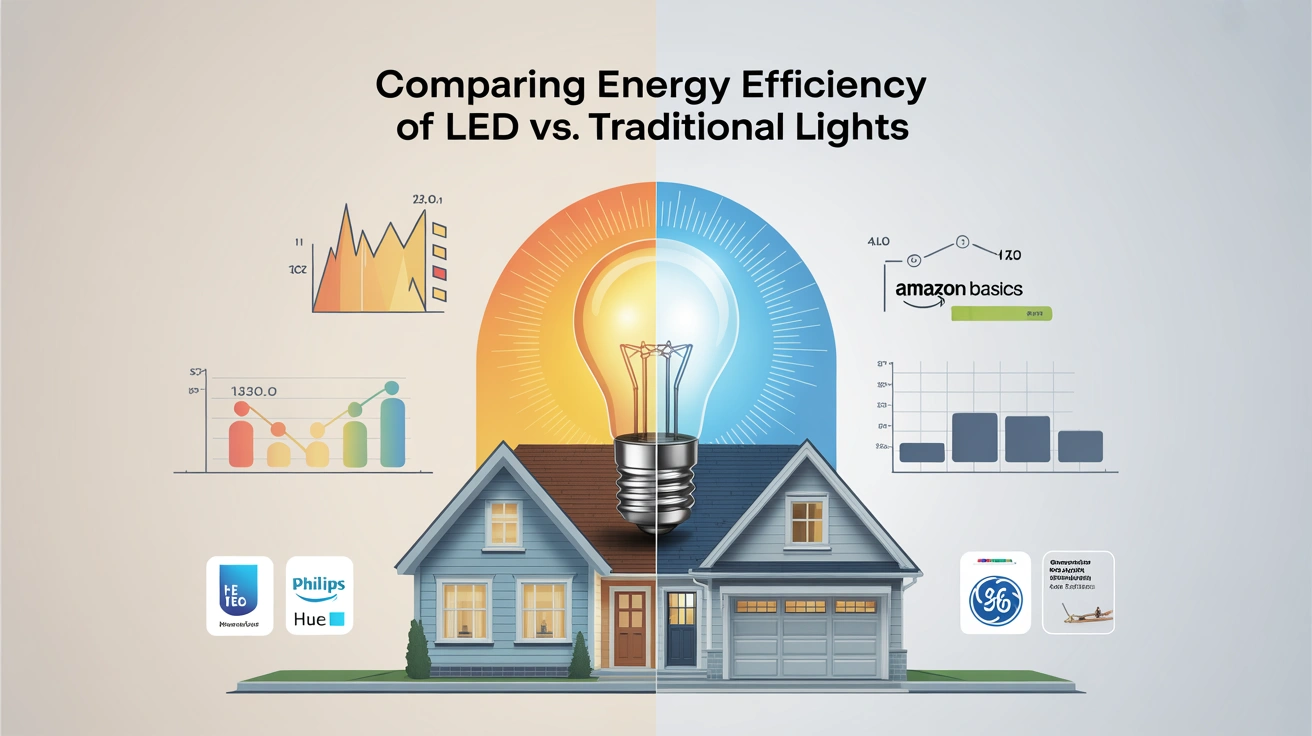
Why Energy Efficiency Matters
Energy-efficient lighting reduces utility bills (avg. $0.15/kWh in the U.S.) and carbon emissions, aligning with sustainable trends. For exterior lighting, efficiency is critical as lights often run 6–8 hours nightly, impacting costs for front porches, garages, or landscapes. Comparing LEDs to traditional lights highlights why LEDs are the preferred choice in 2025.
Comparison of Energy Efficiency
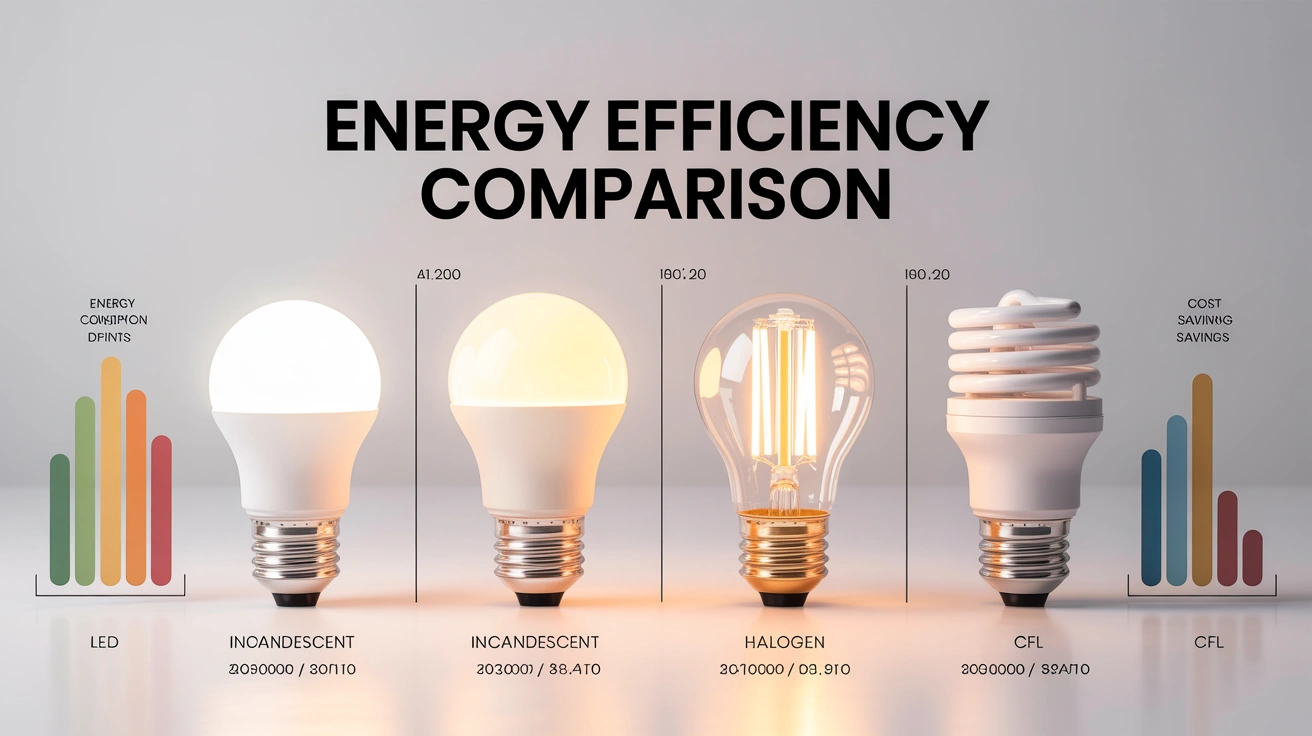
1. Energy Consumption
- LED: Uses 60–80% less energy than incandescents, 50–60% less than halogens, and 20–40% less than CFLs. A 10W LED produces ~800 lumens, equivalent to a 60W incandescent, 40W halogen, or 15W CFL.
- Incandescent: Highly inefficient, converting only ~10% of energy to light; the rest is heat. A 60W bulb uses 60W for ~800 lumens.
- Halogen: Slightly more efficient than incandescents (~15% energy to light), but still high consumption. A 40W halogen yields ~800 lumens.
- CFL: More efficient than incandescents (~25% energy to light), but less than LEDs. A 15W CFL produces ~800 lumens.
- Example: For 10 fixtures running 6 hours/night at $0.15/kWh:
- LED (10W): $3.29/year/fixture, $32.90 total.
- Incandescent (60W): $19.71/year/fixture, $197.10 total.
- Halogen (40W): $13.14/year/fixture, $131.40 total.
- CFL (15W): $4.93/year/fixture, $49.30 total.
- Savings: LEDs save ~$164.20 vs. incandescent, ~$98.50 vs. halogen, and ~$16.40 vs. CFL annually for 10 fixtures.
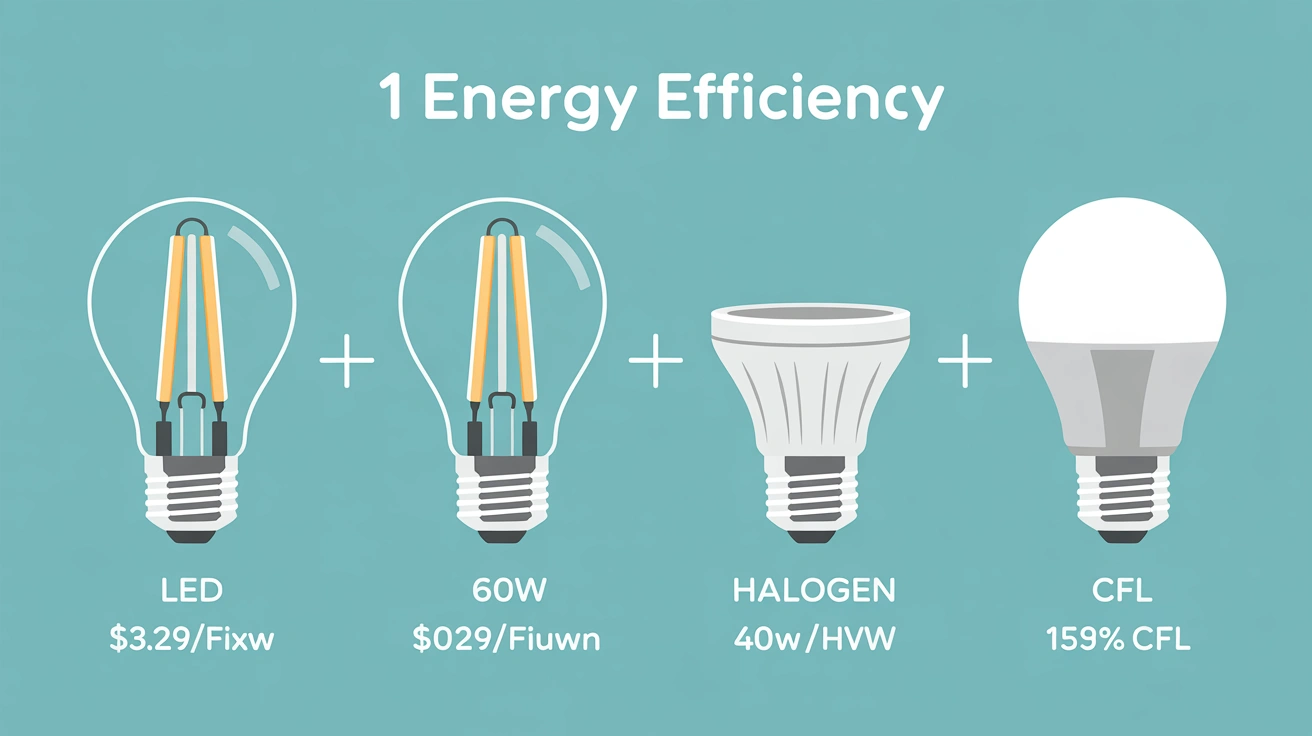
2. Lifespan and Replacement Costs
- LED: Lasts 25,000–50,000 hours (~10–20 years at 6 hours/day), reducing replacement frequency.
- Incandescent: Lasts 1,000 hours (6 months at 6 hours/day), requiring frequent replacements.
- Halogen: Lasts 2,000 hours (1 year at 6 hours/day), slightly better than incandescent.
- CFL: Lasts 8,000–10,000 hours (3–4 years at 6 hours/day), but shorter than LEDs.
- Cost Impact: Over 10 years, a $10 LED bulb replaces ~25 incandescents ($2.50 each, $62.50 total), ~12 halogens ($3 each, $36 total), or ~3 CFLs ($5 each, $15 total), saving $5–$52.50 per fixture.
- Example: Philips Hue A19 LED Bulb ($25, Amazon, 10W, 800 lumens) vs. GE Incandescent A19 ($2, Home Depot, 60W).
- Savings: LEDs reduce bulb costs and labor, especially for hard-to-reach outdoor fixtures.

3. Heat Output
- LED: Converts 80–90% of energy to light, producing minimal heat, reducing cooling costs in warm climates.
- Incandescent: Emits 90% of energy as heat, increasing ambient temperatures and HVAC loads.
- Halogen: Similar to incandescent, with ~85% energy as heat, less efficient than LEDs.
- CFL: Produces less heat than incandescents (~75% energy to light), but more than LEDs.
- Cost Impact: LEDs save ~$0.50–$2/year per fixture in cooling costs (summer months, warm regions like coastal areas).
- Example: Amazon Basics LED Wall Sconce ($40, Amazon, 5W) keeps patios cooler than GE Halogen Floodlight ($5, Home Depot, 50W).
- Benefit: Lower heat improves comfort and efficiency for outdoor spaces.
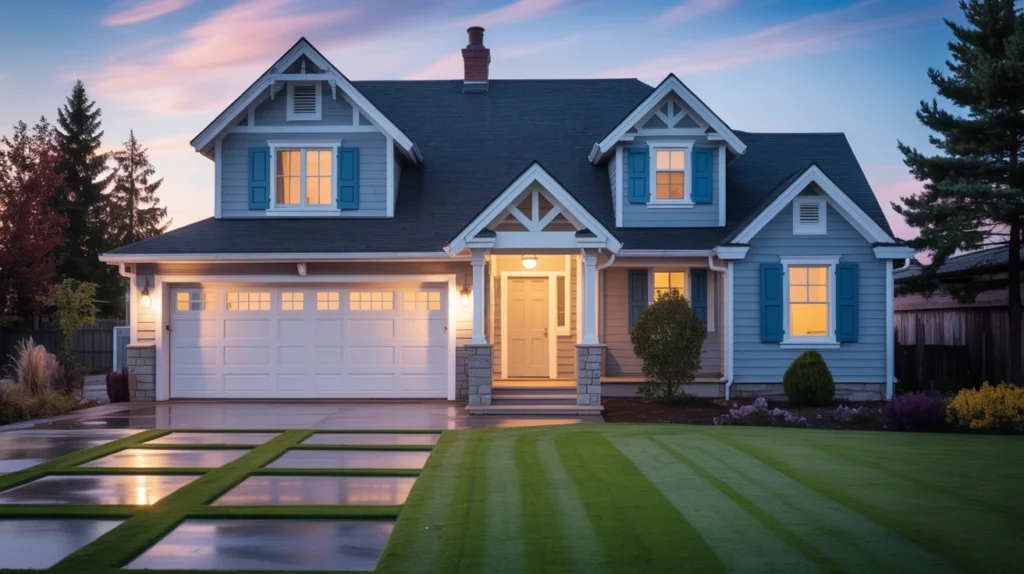
4. Environmental Impact
- LED: Low energy use reduces carbon emissions by ~80% vs. incandescents; no mercury, fully recyclable.
- Incandescent: High energy consumption increases CO2 emissions; no hazardous materials but short lifespan adds waste.
- Halogen: Similar to incandescent, with high emissions and waste due to frequent replacements.
- CFL: More efficient than incandescents but contains mercury (1–5 mg), requiring special disposal; higher emissions than LEDs.
- Impact: For 10 fixtures (6 hours/day, 10 years), LEDs emit ~0.5 tons CO2 vs. ~3 tons for incandescents, ~2 tons for halogens, and ~0.75 tons for CFLs (based on U.S. grid emissions, ~0.4 kg CO2/kWh).
- Benefit: LEDs align with eco-conscious trends for green homes.
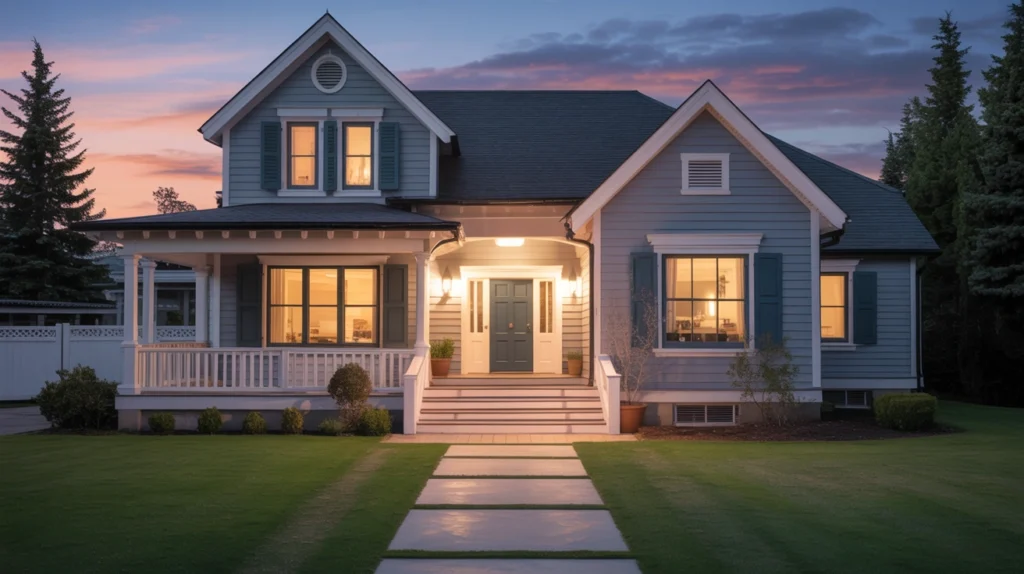
Cost Comparison Over 10 Years (10 Fixtures)
| Light Type | Wattage | Annual Energy Cost (6h/day, $0.15/kWh) | Bulb Lifespan | Bulb Cost (10 Years) | Total Cost (10 Years) |
| LED | 10W | $3.29/fixture ($32.90 total) | 25,000 hours | $10/fixture ($100 total) | $429 (energy + bulbs) |
| Incandescent | 60W | $19.71/fixture ($197.10 total) | 1,000 hours | $62.50/fixture ($625 total) | $2,596 |
| Halogen | 40W | $13.14/fixture ($131.40 total) | 2,000 hours | $36/fixture ($360 total) | $1,674 |
| CFL | 15W | $4.93/fixture ($49.30 total) | 8,000 hours | $15/fixture ($150 total) | $643 |
- Savings: LEDs save ~$2,167 vs. incandescent, ~$1,245 vs. halogen, and ~$214 vs. CFL over 10 years for 10 fixtures.
- Notes: Assumes $10 LED bulb, $2.50 incandescent, $3 halogen, $5 CFL; excludes fixture costs and labor.
Additional Factors for Exterior Use
1. Durability and Weather Resistance
- LED: Solid-state design resists shock; IP65/IP66 fixtures (e.g., Leonlite Floodlight, ~$60, Amazon) withstand rain, snow, and salt air, ideal for coastal homes.
- Incandescent: Fragile filament breaks easily; less reliable in harsh weather.
- Halogen: Similar to incandescent, with fragile bulbs prone to failure in vibrations or cold.
- CFL: Sensitive to temperature extremes; slower startup in cold; mercury risk if broken.
- Benefit: LEDs reduce maintenance costs (~$50–$100/electrician visit) for outdoor fixtures.
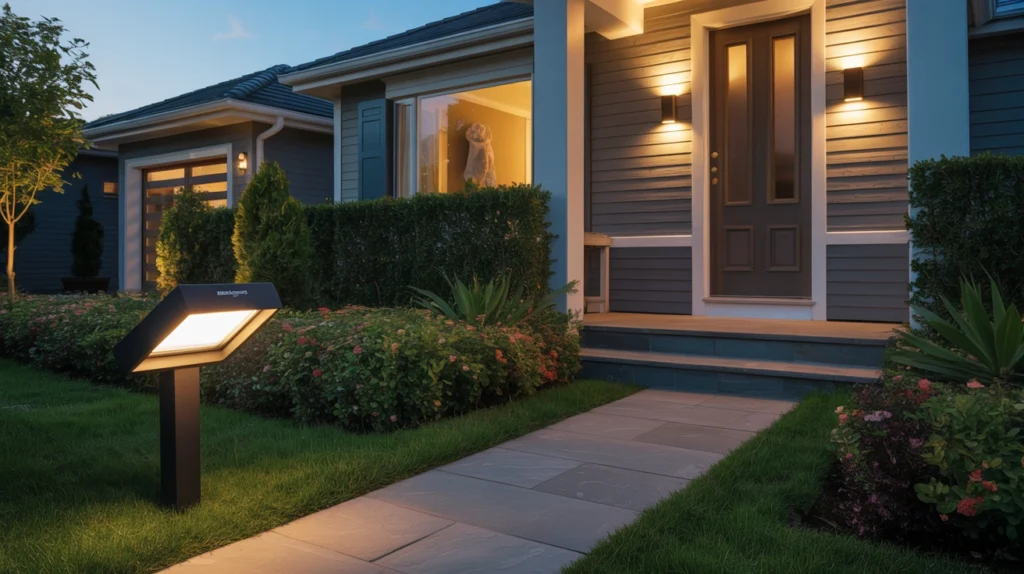
2. Versatility and Features
- LED: Available in warm white (2700K–3000K), cool white (4000K–5000K), or color-changing (e.g., Philips Hue Econic, ~$180, Amazon). Supports dimmable, motion sensors, and smart controls.
- Incandescent: Limited to warm white (~2700K); non-dimmable in most cases; no smart features.
- Halogen: Warm white (~3000K); dimmable but no smart integration.
- CFL: Warm to cool white (2700K–5000K); limited dimmability; no smart options.
- Benefit: LEDs enhance curb appeal with customizable lighting for light blue or navy exteriors.
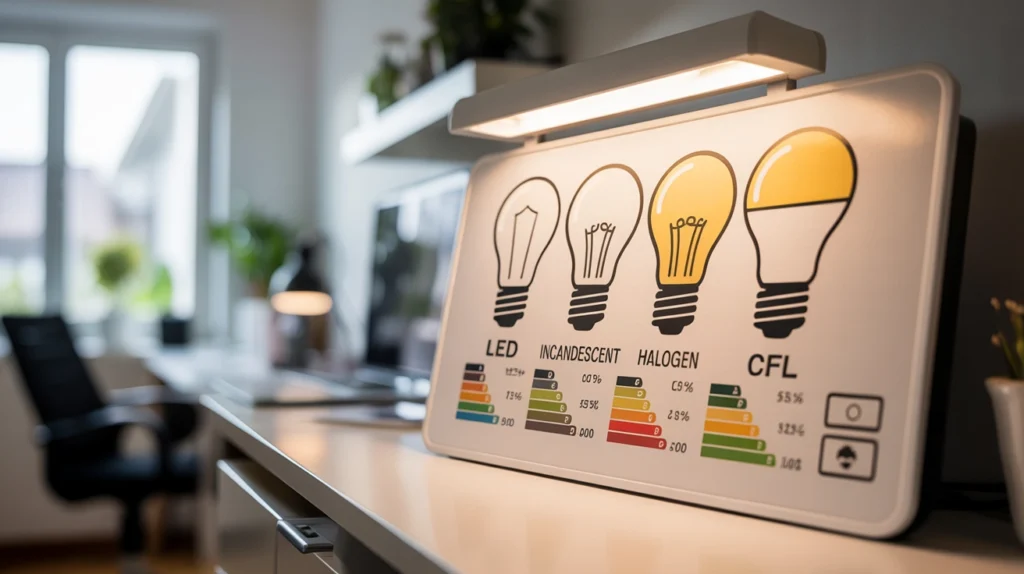
3. Startup Time and Performance
- LED: Instant-on, even in cold; consistent brightness over time.
- Incandescent: Instant-on but dims as filament ages.
- Halogen: Instant-on, slightly brighter than incandescent but dims over time.
- CFL: 30–60 second warmup, especially in cold; brightness fades with age.
- Benefit: LEDs ensure reliable security lighting for pathways or garages.
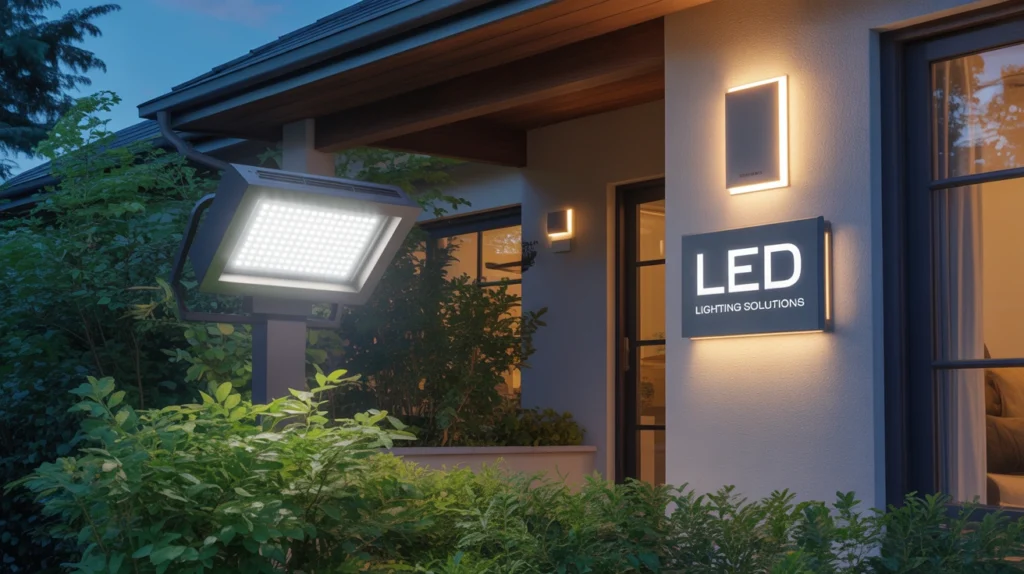
4. Rebates and Incentives
- LED: Qualifies for Energy Star rebates ($2–$20/fixture) via utilities or DSIRE, offsetting costs.
- Incandescent/Halogen: Rarely eligible for rebates due to inefficiency.
- CFL: Limited rebates; declining use reduces availability.
- Benefit: LEDs lower upfront costs, with faster payback (~1–2 years).
Practical Applications for Exterior Lighting
- Porches:
- LED: Amazon Basics LED Wall Sconce (~$40, Amazon, 5W, 400 lumens) saves ~$10/year vs. incandescent.
- Traditional: GE Incandescent Sconce Bulb (60W) costs ~$19.70/year.
- Pathways:
- LED: Linkind Solar LED Spotlight (~$30, Amazon, 7W, 400 lumens) uses zero electricity.
- Traditional: GE CFL Pathlight (15W) costs ~$4.90/year.
- Driveways:
- LED: Leonlite Motion-Sensor Floodlight (~$60, Amazon, 20W, 1800 lumens) saves ~$15/year with sensors.
- Traditional: GE Halogen Floodlight (50W) costs ~$16.40/year.
- Customer Quote: “LED sconces save us a ton on our light blue porch!” – Sarah M., Raleigh, NC.
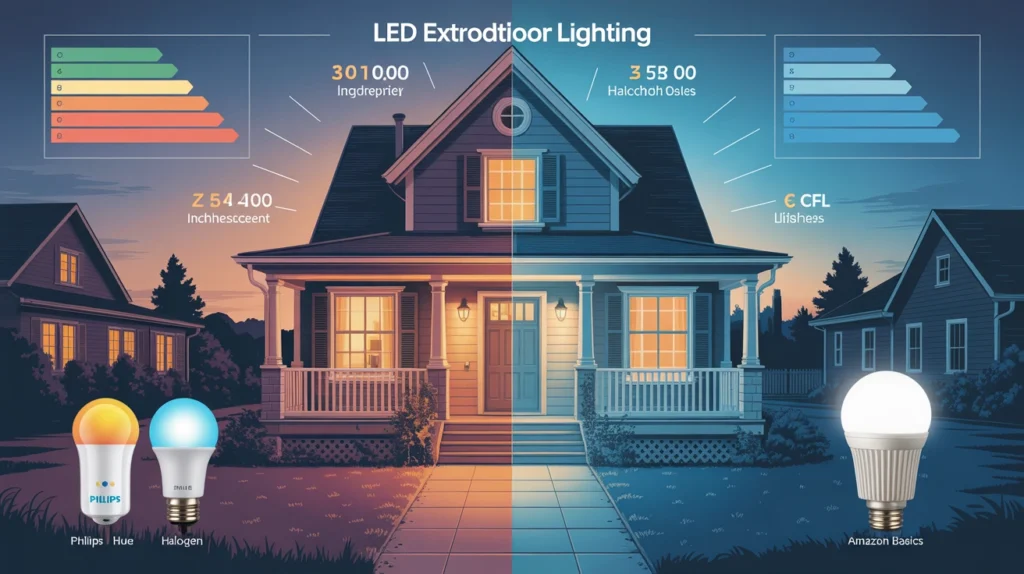
Installation and Maintenance Tips
- LED:
- Installation: Compatible with standard fixtures; use electricians for hardwired setups ($100–$300/fixture). Solar LEDs require no wiring.
- Maintenance: Clean lenses monthly; lasts 10–20 years; no frequent replacements.
- Traditional:
- Installation: Same as LEDs but may require specific sockets (e.g., CFL GU24 bases).
- Maintenance: Replace incandescents every ~6 months, halogens every ~1 year, CFLs every ~3 years; dispose of CFLs at recycling centers due to mercury.
- Tip: Check IP65/IP66 ratings for weather resistance in coastal or humid areas.
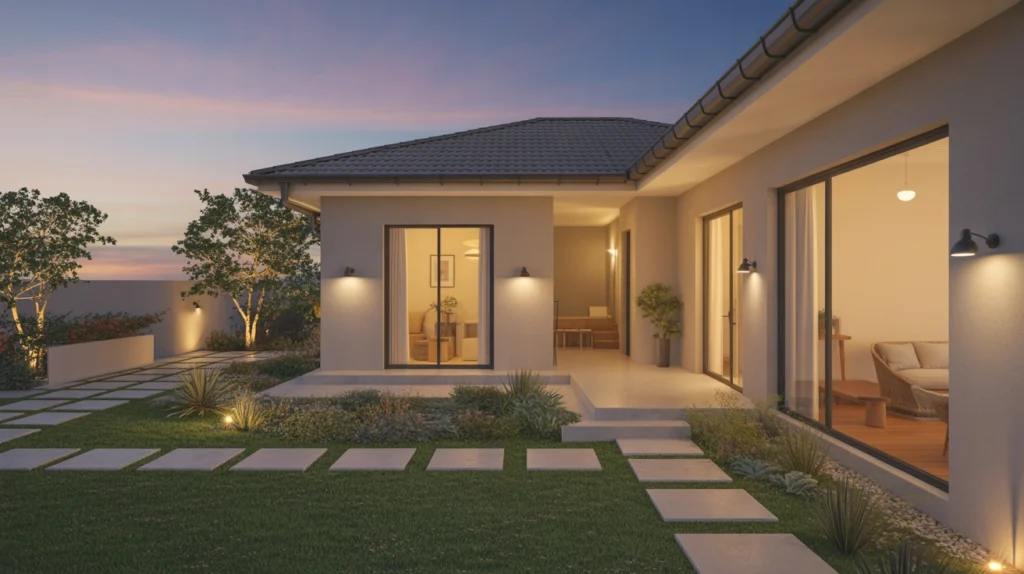
Where to Buy
- Amazon: Budget-friendly Amazon Basics, Philips Hue, Leonlite.
- Home Depot: Stocks GE, Kichler, Hampton Bay.
- Wayfair: Stylish LED sconces and floodlights.
- Manufacturer Sites: Direct purchases for warranties.
Customer Insights
- Sarah M., Raleigh, NC: “LED lanterns cut our bill and light our light blue porch beautifully!”
- Emily T., Seattle, WA: “LED floodlights save energy on our gray driveway vs. old halogens!”
- Mark T., Central Iowa: “Solar LEDs cost nothing and brighten our navy path!”
Conclusion
LEDs are far more energy-efficient than traditional lights, using 60–80% less power, lasting 25–50 times longer than incandescents, and producing minimal heat. For exterior house lighting, LEDs save ~$100–$200/year for 10 fixtures compared to incandescents, halogens, or CFLs, with added benefits like durability, smart features, and eco-friendliness. Choose LEDs from Philips Hue, Amazon Basics, or Leonlite for porches, pathways, or driveways, and shop at Amazon, Home Depot, or Wayfair. Share your LED lighting projects on Pinterest or Houzz to inspire others and illuminate your dream home sustainably!


